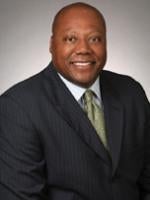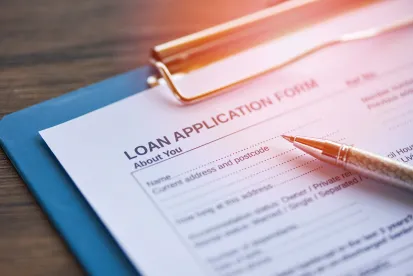On April 30, the Federal Reserve Board (“Board”) announced an expansion of the Main Street Loan Program and updated terms to the program’s original offerings. The program is now comprised of the Main Street New Loan (“New Loan”) (Term Sheet), Main Street Expanded Loan (“Expanded Loan”) (Term Sheet), and Main Street Priority Loan (“Priority Loan”) (Term Sheet) Facilities. When the program opens, the Board will facilitate $600 billion in loans to small and medium-sized businesses (See here for FAQs). Among other changes, the Board expanded eligibility for borrowers and lenders, modified interest and amortization terms, and provided more flexibility (and responsibility) to lenders. These were made in light of public input from more than 2,200 comments that the Board received since announcing the Main Street Lending Program on April 9.
Main Street Priority Loan Facility
Loan Terms and Fees
Through the Priority Loan Facility, a special purpose vehicle (“SPV”) funded by the Treasury Department and the Board will purchase 85 percent loan participations, based on par value, from eligible lenders in secured or unsecured four-year term loans to eligible borrowers originated after April 24, 2020 with par amounts of at least $500,000 but no more than the lesser of (i) $25,000,000 or (ii) 6x adjusted 2019 EBITDA when the loan is added to the borrower’s existing outstanding and undrawn available debt (“Priority Loans”). Risk will be shared on a pari passu basis. A Priority Loan must be senior or pari passu with respect to priority and security to any other loan or debt the borrower has (except for mortgage debts).
Priority Loans may be disbursed by any federally insured depository institution, a U.S. bank or savings and loan holding company, a U.S. intermediate holding company, a U.S. branch or agency of a foreign bank, or any of these organizations’ subsidiaries. The Board is considering expanding the pool of eligible lenders to potentially include nonbank lenders such as fintech companies.
The Priority Loans will accrue interest at an adjustable rate equal to LIBOR (one or three months) plus 300 basis points. The Board has indicated that the move from SOFR to LIBOR was made to eliminate a potential source of delay in disbursements by lenders that would have to implement new systems to issue loans based on SOFR given the continuing importance of LIBOR among many of the eligible lenders.
Although principal and interest will be deferred for the first year, loans funded through the Priority Loan Facility must be fully amortizing over four years, with required payments of 15% in years 2 and 3, and a 70% bullet payment in year 4. The Priority Loans may be prepaid without penalty, but there will not be any forgiveness.
Borrowers will be required to pay an origination fee of 100 basis points and lenders / participation sellers will have to pay a facility fee of 100 basis points, in each case based on the principal amount of the loan at the time of origination. However, the facility fee is offset by a 25 percent servicing fee paid to the lender by the participating SPV and lenders can pass the cost of the facility fee on to the borrower, so borrowers may pay 200 basis points for such loans.
Eligible Borrowers
Priority Loans may be extended only to for-profit businesses that:
- employ 15,000 or fewer employees, or earned $5 billion or less in 2019 annual revenue (when aggregated with their affiliates’ employees and revenue);
- have not received “specific support” under the CARES Act, with the exception of Paycheck Protection Program (“PPP”) loans;
- have not received financing through the New or Expand Loan Facilities or the Primary Market Corporate Credit Facility; and
- are not an “ineligible business,” as defined under 13 CFR 120.110(b)–(j), (m)–(s), and as clarified by the Small Business Administration with respect to the PPP, which would exclude lenders, passive businesses owned by developers and landlords, businesses engaged in illegal activity, and private equity firms.
As of now, the definition of “eligible business” is expressly limited to for-profit entities. However, the Board may consider “other forms of organization . . . for inclusion” in the future.
Borrower and Lender Certifications
An Eligible Lender must obtain certain certifications and covenants from each borrower at the time of origination. These certifications include that the business has a reasonable basis to believe it will not go bankrupt in the next 90 days and it can meet its financial obligations for at least 90 days. The business must also certify that it will not repay any principal or interest on any loan or debt (unless otherwise mandated) until the Priority Loan is repaid. Moreover, the borrower must certify that it will not seek to cancel or reduce its committed lines of credit with any lender; that it is eligible to receive such a loan; and that it will follow the CARES Act’s restrictions on compensation, stock buybacks, and dividend and capital distributions. Approved borrowers must also make commercially reasonable efforts to maintain payroll and employment while the Priority Loan is outstanding.
Eligible lenders must certify that they are eligible to participate in the program; that the methodology used to adjust the borrower’s EBITDA is the same methodology used for the same borrower or similarly situated borrowers on or before April 24, 2020; and that the lender will not cancel or reduce existing lines of outstanding credit (absent default). The lender has the responsibility to assess the borrower’s financial condition at the time of the application.
Changes to the Main Street New Loan and Expanded Loan Facilities
The Board has made conforming changes to the New and the Expanded Loan Facilities to create a uniform program. Many of these changes are significant.
Interest Accrual Terms
The interest on a New Loan or an Expanded Loan will now accrue at an adjustable rate of LIBOR (one or three months) plus 300 basis points instead of an adjustable rate of SOFR plus 250–400 basis points. The rationale for using LIBOR is the same reason for its use in the Priority Loan Facility.
Loan Size
The minimum loan size of a New Loan is now $500,000 rather than $1,000,000. For Expanded Loans, the minimum loan size is now $10,000,000 rather than $1,000,000.
The calculation for maximum loan size under the New and the Expanded Loan Facilities has also changed. Previously, the maximum size for a New Loan was the lesser of (i) $25,000,000 or (ii) an amount that does not exceed 4x 2019 EBITDA when added to “existing outstanding and committed but undrawn debt.”
- Now, the maximum size of a New Loan is the lesser of (i) $25,000,000 or (ii) an amount that does not exceed 4x 2019 adjusted 2019 EBITDA when added to “existing outstanding and undrawn available debt.”
- For Expanded Loans, the maximum size is now the lesser of: (i) $200,000,000 (rather than $150,000,000), or (ii) 35% (rather than 30%) of existing outstanding and undrawn available debt that is pari passu in priority with the Expanded Loan, or (iii) 6x adjusted 2019 EBITDA when added to “existing outstanding and committed but undrawn available debt” rather than just bank debt.
Additionally, the amortization schedule now has been set so that the borrower must pay off a New Loan by paying 33.3% of the principal and interest in each of years 2 through 4. Expanded Loans are subject to the same amortization schedule as Priority Loans. Finally, a New Loan may not be contractually subordinate in priority to any other loan or debt instrument at any time.
Eligible Lenders
The Board has expanded the scope of eligible lenders for New Loans and Expanded Loans. New and Expanded Loans may be disbursed by any federally insured depository institution, a U.S. bank or savings and loan holding company, a U.S. intermediate holding company, or a U.S. branch or agency of a foreign bank, or any of these organizations’ subsidiaries. The Board is considering expanding the pool of eligible lenders, which may include nonbanks such as fintechs.
Eligible Borrowers
Previously, only businesses with 10,000 or fewer employees, or annual 2019 revenue of $2.5 billion or less, were eligible for these facilities. Now, businesses with up to 15,000 employees or 2019 annual revenue of $5 billion or less are eligible. Employees and revenue now must be calculated by aggregating them with the employees and revenues of affiliated entities in the manner prescribed by the SBA.
The Board also did not originally exclude particular businesses. Now, a borrower may not be an “ineligible business,” as defined under 13 CFR 120.110(b)–(j), (m)–(s) and as modified by the SBA with respect to the PPP. The Board has also clarified that borrowers must be for-profit businesses who have not received financing through another facility under the Main Street Lending Program or the Primary Market Corporate Credit Facility.
Changes to Borrower and Lender Certifications
The borrower and lender certifications for either type of loan have been streamlined in order to create more uniformity among both programs and with the Priority Loan Facility.
Now, the borrower must commit to not repaying the principal or interest on any debt until the loan is repaid and not seeking to cancel or reduce any committed lines of credit with any lender, among other certifications. Borrowers must still abide by the CARES Act’s restrictions on stock buybacks, dividends, capital distributions, and compensation, and must make commercially reasonable efforts to maintain payroll and employment.
Eligible lenders’ certifications also have been streamlined. For instance, they must certify that they are eligible to participate in the program; that the methodology used to adjust the borrower’s EBITDA is the same methodology used for the same borrower (or, in the case of the Expanded Program) similarly situated borrowers on or before April 24, 2020; and that the lender will not cancel or reduce existing lines of outstanding credit (absent default), among other certifications. It is the lender’s responsibility to assess the borrower’s financial condition at the time of the application.
Conclusion
None of the Main Street Lending Program’s facilities are operational at this time. However, the past week has seen Board activity to expand this program as well as the Paycheck Protection Program Facility. The streamlining changes and the move away from SOFR back to LIBOR show that the Board and the Treasury are intent on facilitating speedy disbursements of funds. However questions remain, particularly with respect to calculations of EBITDA and how funds will be made available to satisfy the unique needs of non-profit organizations, many of which the Board acknowledges are on the front lines providing critical services and research to fight the health care crisis. For additional insights into these developments, please contact any of the authors.
For information about the Board’s other lending facilities, please see the following links:
- For the Primary Market Corporate Credit, the Secondary Market Corporate Credit, and the Term Asset-Backed Securities Loan Facilities, please see here.
- For information about the Paycheck Protection Program and Municipal Liquidity Facilities, please see here.
- For information about the Money Market Mutual Fund Liquidity Facility, please see here and here.
- For information about the Commercial Paper Funding and Primary Dealer Credit Facilities, please see here, here and here.








 />i
/>i
